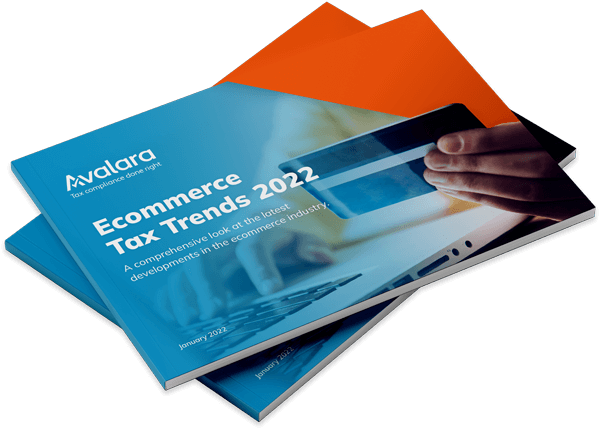
How to expand into the US without breaking compliance rules
Tax compliance requirements exist in all global territories and markets, but the rules aren’t universal. They can even differ within a region or market at local levels, creating complications for businesses selling cross-border. The United States is a prime example, where rules differ not only from state to state but in cities and counties within a state.
Let’s take a look at the U.S. compliance landscape, its challenges, and how to overcome them.
Key takeaways
- Differences between U.S. sales tax and VAT
- The basics of ‘nexus’ and why it’s so important
- Why getting HS codes right is essential
Differences between U.S. sales tax and VAT
Understanding your U.S. sales and use tax liabilities is critical when entering the U.S. market. U.S. sales and use tax is a different proposition for European businesses used to dealing with value-added tax (VAT). VAT is a consumption tax charged at each stage of the supply chain. It’s set at a national level and maintains fairly consistent rates with little variance between countries with VAT systems.
U.S. sales and use tax is very different. It’s charged only to the final consumer, but that doesn’t make things simpler. There are more than 12,000 U.S. sales and use tax jurisdictions with varying rates, requirements, and thresholds. These rates aren’t set at a national level and can change much more frequently than VAT or GST rates. For example, in 2023 there were 11,192 sales and use tax rate changes in the U.S. This makes manual monitoring of the rates and rules almost impossible.
Even if you’re selling to just a handful of customers within the same U.S. state, each one may need to be charged different rates of U.S. sales and use tax depending on where they’re based and the items purchased. As you reach more customers, especially in other states, the complexity multiplies. Throw in the fact that some states do not charge U.S. sales and use tax at all (Alaska, Delaware, Montana, New Hampshire, Oregon), and your chances of charging the correct rates on every sale are slim.
It’s also important to understand the role of consumer use tax. While typically owed by the buyer when sales tax isn’t collected, it can become a liability for your international business if you have U.S.-based operations or staff using goods or services purchased without tax. Even with no physical presence, licensing software or tools accessed by users in the U.S. could trigger use tax obligations depending on the state. Knowing when and where this applies can help prevent unexpected compliance issues.
How to overcome the challenge
Tax calculation software can make the seemingly impossible task of U.S. tax compliance a seamless part of your sales process. Integrating software into your systems can help you more accurately calculate U.S. sales and use taxes then instantly apply them to your checkout in a fraction of the time it would take to do so manually. This helps to give the most accurate final landed cost to your customers, regardless of where in the U.S. they’re based, what they’re buying, and in what quantity.
Know your nexus
This can be an alien concept to non-U.S. businesses. Nexus is the commercial connection between a business and a U.S. state (or locality) that mandates the requirement to collect and remit U.S. sales and use tax. Businesses once needed a physical presence in a U.S. state to have nexus there. However, the landmark South Dakota v. Wayfair, Inc. ruling — in which the U.S. Supreme Court ruled that remote sellers can be liable for U.S. sales and use tax even without a physical presence — changed everything.
It’s important for businesses entering the U.S. market to understand the types of sales tax nexus they can establish:
- Physical nexus — This is triggered when a business has a physical connection to a state, such as staff, an office, warehouse, or inventory.
- Economic nexus — A business establishes this when their sales exceed a state’s threshold. State thresholds vary across the U.S. and could be determined by a dollar amount of sales, transaction volume, or both. For example, Alabama’s threshold is $250,000 in sales. In Washington, D.C., the threshold is $100,000 in sales or 200 transactions, while in New York it’s $500,000 in sales and 100 transactions.
- Affiliate nexus — This occurs when an out-of-state business, such as those in Europe, develops a relationship with an in-state organisation or business, which are known as ‘affiliates’. The nature of the relationships that establish affiliate nexus vary from state to state.
- Click-through nexus — This is created when an out-of-state business rewards an in-state business for referring customers to them via website links.
Registering for U.S. sales tax as a foreign business can be difficult as it’s possible to establish nexus without intending or realising. It’s also hard to determine where you might trigger new obligations in the future. Businesses that are unaware of the rules and haven’t taken steps to monitor their obligations could owe back taxes and face additional penalties.
Marketplaces and nexus
Many states have enacted marketplace facilitator laws. These laws impose an obligation on marketplaces that facilitate sales, such as Amazon, Etsy, and eBay. If nexus thresholds are met or exceeded, the marketplace is required to collect and remit sales tax on behalf of the marketplace seller. The obligation to collect and remit U.S. sales tax is therefore shifted from the seller to the marketplace platform. This may seem like lightening the load for remote sellers making sales on such marketplaces, but they still need to take steps to either include or exclude marketplace sales in their economic nexus threshold count. Once again, the rules and thresholds depend on the U.S. state.
How to overcome the challenge
Businesses must monitor their sales in each U.S. state to keep track of whether they’ve exceeded nexus thresholds. An assessment tool, like Avalara’s sales tax risk assessment, can help you stay on top of your existing obligations, flag when new responsibilities are about to be triggered, and reduce the risk of noncompliance.
Download the Know your nexus guide to learn more about sales tax nexus and its triggers.
Don’t forget about Harmonised System (HS) codes
Businesses selling tangible goods must manage the compliance responsibilities that arise after the purchase is made. Getting goods across an ocean means understanding and complying with customs rules as well as paying the correct duties and taxes.
HS codes are multidigit identifiers assigned to every product sold across international borders. These codes enable customs authorities to apply the correct duties and taxes when they reach customs. Although HS codes don’t change as frequently as certain tax rates, they do update every few years. An added complication is that the same product can have different codes in different regions and markets. Getting HS codes right can therefore be difficult. In fact, a February 2025 survey by Censuswide in conjunction with Avalara found that 42% of respondents experienced delayed shipments due to incorrect HS classification, and 38% incurred fines or penalties because of it in the past year.
Using the wrong HS codes could mean your goods are barred from entry entirely (which involves reverse shipping costs), or there could be additional fees that are passed onto the recipient. Businesses engaged in international trade should also be aware of the Trump tariffs — a series of new or increased import taxes imposed by U.S. President Donald Trump on a broad range of products. International businesses must now stay informed about tariff requirements and monitor rate changes.
How to overcome the challenge
Automation can help sellers determine the correct HS codes much more quickly and apply them to their items more accurately. This helps ensure their goods move as quickly as possible through customs and reduces the chances of additional fees or surprise costs of release for the customer. Goods can reach international buyers more quickly, which goes a long way towards keeping customers happy and more likely to buy again. The same technology can help clarify and simplify the tariff situation by calculating import taxes in real time, saving you the time and hassle of manually taking on this near-impossible task.
Consequences of noncompliance
In short, failing to comply with your U.S. sales tax obligations will likely not end well for your business. It’s up to businesses to learn the rules and abide by them — the U.S. government and state authorities are under no obligation to approach businesses to make sure they understand their compliance requirements. You could face disruptive audits, be subject to financial penalties, and even suffer reputational damage that can put a dent in your customers’ trust in you.
How to ensure compliance
Cross-border tax compliance for businesses, particularly when it comes to U.S. sales tax compliance for European companies, can be a huge challenge. Breaking this challenge into steps can help:
- Research — Understand the nexus laws in each U.S. state you’re selling in or have a commercial connection to, as well as the U.S. sales tax rates in those states (including in-state differences at local levels).
- Register — Register for U.S. sales tax in the U.S. states you’re required to, according to your nexus obligations.
- Calculate — Accurately determine the correct U.S. sales tax rates for your products or services and apply at the point of sale to create a clear buying experience.
- Collect and remit — Collect all required U.S. sales tax from your customers and remit to the relevant tax authorities by filing returns on time.
Even when broken down into steps, it could be full-time work for an entire team of people to manually check changing rates and rules, monitor nexus thresholds, and get prices right at checkout by calculating rates. Legacy technology can also be ineffective and time-consuming.
Tax automation software can do the hard work for you. The right solutions can help you save time and money by keeping you updated with your obligations, instantly calculating rates, and even helping with your registrations and filing. Technology that scales can also grow with you as you expand across the U.S., so you won’t have to worry about different systems and processes for each new state you enter.
Speak with an Avalara tax specialist today to learn more about how our solutions can help you expand into the U.S. without breaking compliance rules.
Ecommerce Tax Trends Report 2022
Get a comprehensive look at the latest developments in the ecommerce industry.

Stay up to date
Sign up for our free newsletter and stay up to date with the latest tax news.



